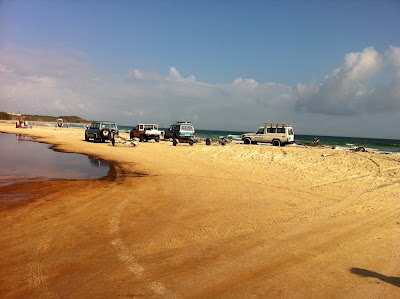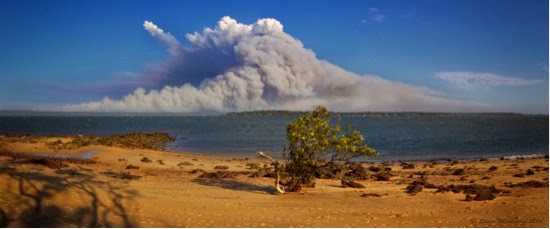Shorebirds are very easily disturbed by close activity. A disturbance is any action that interrupts the breeding, feeding or resting of shorebirds. For example, causing a shorebird to take flight represents a significant disturbance. When shorebirds take flight they use critical energy that is required for migration and breeding. Repeated disturbances and disturbances that occur before or after migration are particularly damaging for shorebirds. Without sufficient energy reserves shorebirds may be unable to complete their migration or breed.
 |
| Vehicles driven over Home Beach to the detriment of shore birds and their habitat |
We can all help prevent shorebird disturbance by following these guidelines:
- Keep dogs and cats under control and well away from shorebirds. Every time shorebirds are forced to take flight, they burn vital energy.
- Avoid driving or operating all forms of vehicles, vessels and recreational devices near shorebirds. Use 4 wheel drive vehicles only where permitted and drive close to the water’s edge to avoid crushing nests. Don't drive along the beach at high tide or above the high-water mark - especially between September and March in the summer breeding season.
- If fishing from a sandbar, choose the opposite end to where the birds are gathered.
- Feral animals can kill shorebirds —report any sightings of foxes and other feral animals to Redland City Council.
- Consider how our actions may disturb shorebirds. This can include where we set up camp or whether we stroll through a roost site at high tide. We should keep our distance from shorebirds.
- At home, try to minimise water wastage and be conscious of what chemicals we empty down the drain.
Congratulations to Michael Dickinson, Straddie fox catcher, who has trapped 70+ foxes in the past few years. The recent increase in Bush Stone Curlew around Point Lookout island is probably due to his fantastic work as foxes are considered to be the biggest threat to curlews and have caused their near extinction in Southern Australia.



